Take a Walk on the Wildside
WALKING SAFARIS IN AFRICA
Take a walk on the wild side with walking safaris in Africa! Nothing can compare to exploring the uncharted territory of pristine Africa on foot. Find yourself in the middle of nowhere, immersed in nature and tuning in to the bush as you soak up the sounds and smells around you. Walking safaris in Africa take place in game reserves across Southern and East Africa, where you can see not only the plains game but the big game as well.
Completely different from game drives, walking safaris are a wonderful way to understand your surroundings. Encountering the wild animals in their world is exhilarating and rewarding. Your safari guide(s) will point out tracks, interesting insects, flora, birds and much more.
WHAT ARE WALKING SAFARIS?
There are a few types of walking safaris in Africa, all with their merits. Most safari lodges and camps offer a short walk for a few hours as a break from a game drive, but not replacing the drive. This will suit most people and you do not need to very fit. Classic walking safaris take guests from camp to camp in an area. Fly camping is where the camp is set up each night in a new place.
And finally, a safari camp that will only do walking safaris and you return each night to the same camp. Most of these are for walking aficionados who love to walk, or for the returning visitor who is looking for a more active safari.
You are generally accompanied by a guide and a tracker, and sometimes another guide. In most countries, your lead guide is armed with a rifle, however, this depends on the laws of that country. The duration of your walk depends on what style of walking safari you have chosen.
Bushwalks from luxury safari lodges last 2-3 hours, while the longer multi-day walking safaris can do 5-6 hours a day, with breaks! Early mornings are normal on safari, and this is important for walking safaris, to avoid the heat of the day and when many animals are active. Interpret the tracks made during the night and see where they lead!
Unfortunately, no children are allowed on walking safaris, with children aged from 12 to 15 years and older are allowed, country dependent. The luxury safari lodges who have children’s programs will often take them for a bush bumble in the area right at the lodge – there are plenty insects, droppings and dung, and more to keep the little ones enthralled.
WALK THROUGH PRISTINE WILDERNESS
Enjoy a Masai Mara Walking Safari
WHAT WILDLIFE CAN YOU SEE ON WALKING SAFARIS IN AFRICA?
The wildlife sightings you will see on your walking safari are often more intense, and more intimate than from the back of a vehicle. You can also go places a vehicle could not, truly off the beaten park. You generally get to see some of the plains game – impala, springbok, gazelle, kudu, wildebeest and perhaps the buffalo as well. Old male buffalo are grumpy and to be avoided!
Elephants can be seen regularly, perhaps a white rhino from a distance, hyenas trotting past to check you out and more. It is not unheard of to see lions, they are lazy cats especially when their bellies are full, so it is a treat to see them on foot – at a distance.
You will learn why the hyena scat is white, what a salt lick is, scent-marking methods of different animals and so many birds!
To see as many different animals on your safari as possible, it is advised you combine your walking safari with a traditional safari in a lodge or camp, where you can enjoy game drives that cover more ground.
ARE WALKING SAFARIS SAFE?
Walking safaris are a daring form of exploration, but the thrills and rewards are incredible. Your guides take your safety very seriously. Not all guides are allowed to conduct walking safaris, there are rigorous exams, including rifle competency. Only when guides have spent hours as a backup guide will they be allowed to head off with their tracker. You must listen to the guides carefully, despite what your instincts tell you to do. Humans are generally seen as a danger and avoided by animals.
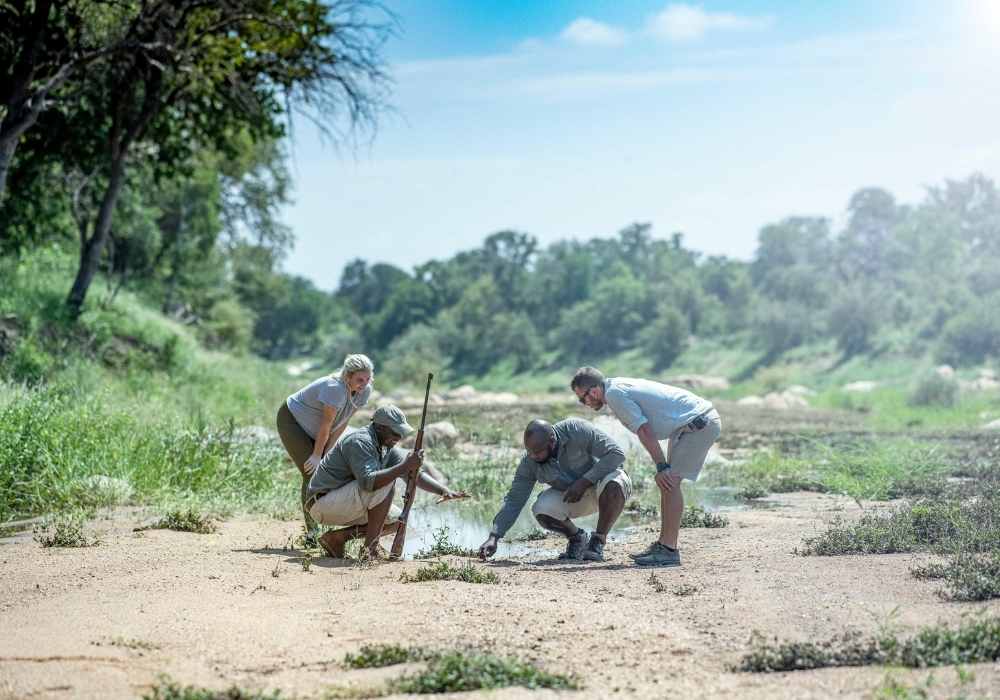
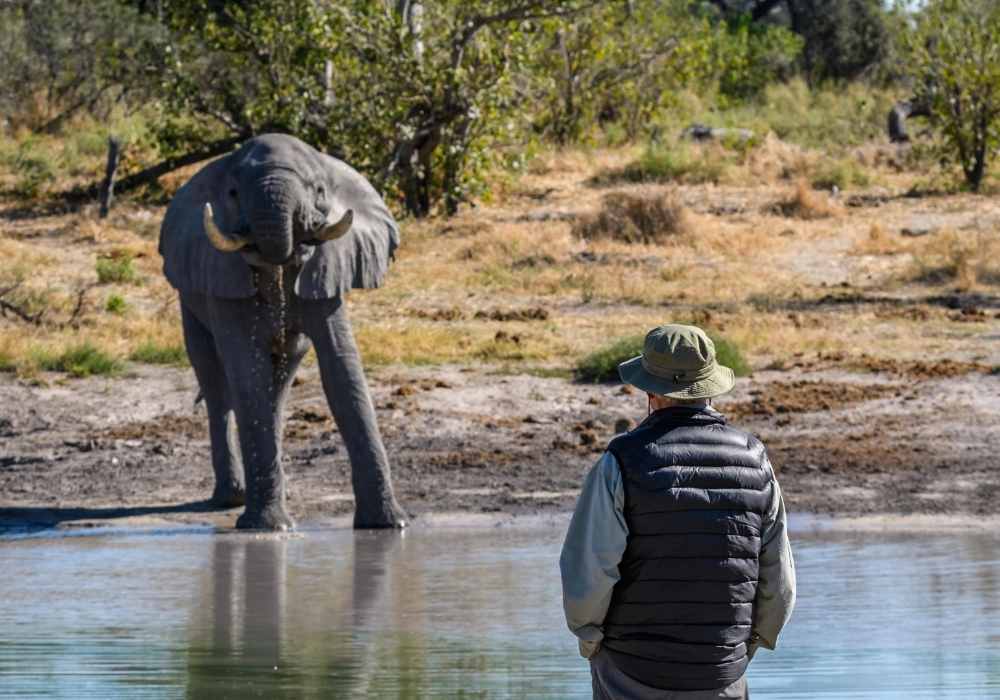
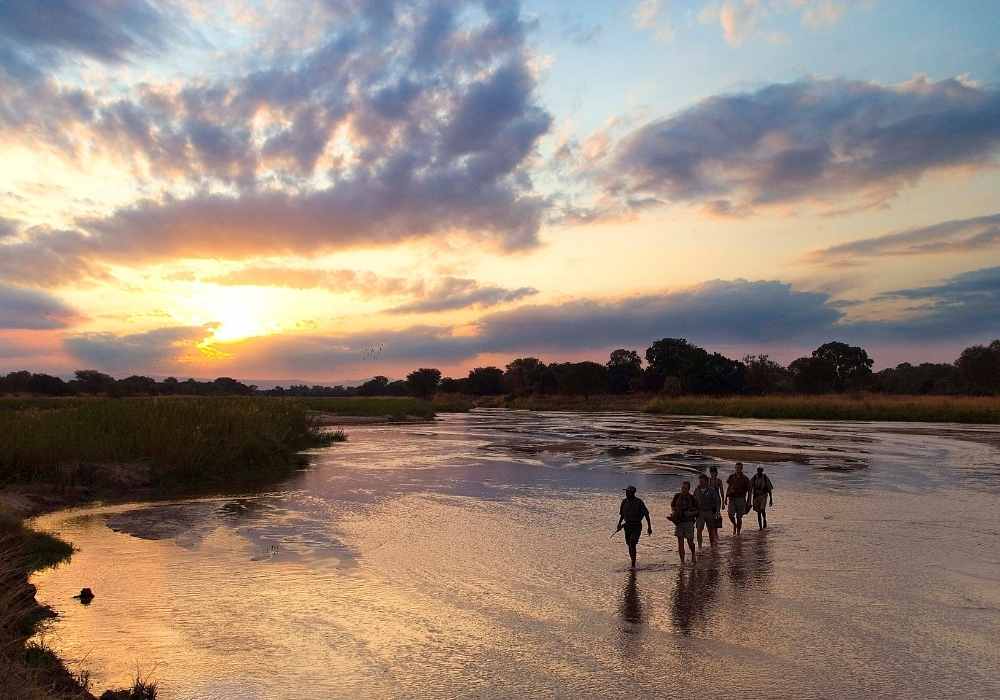
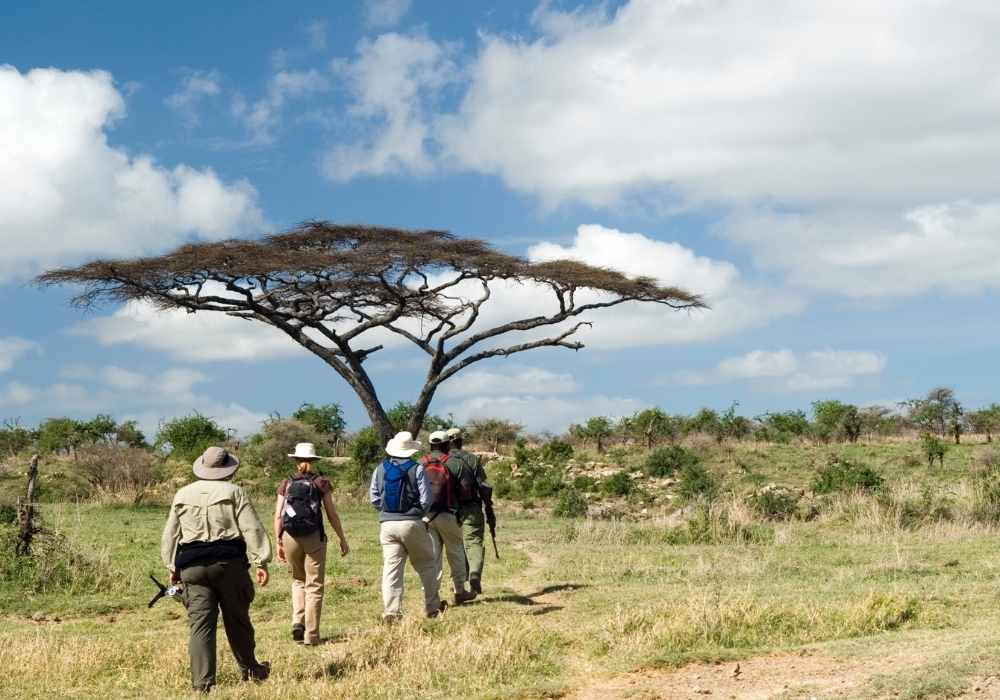
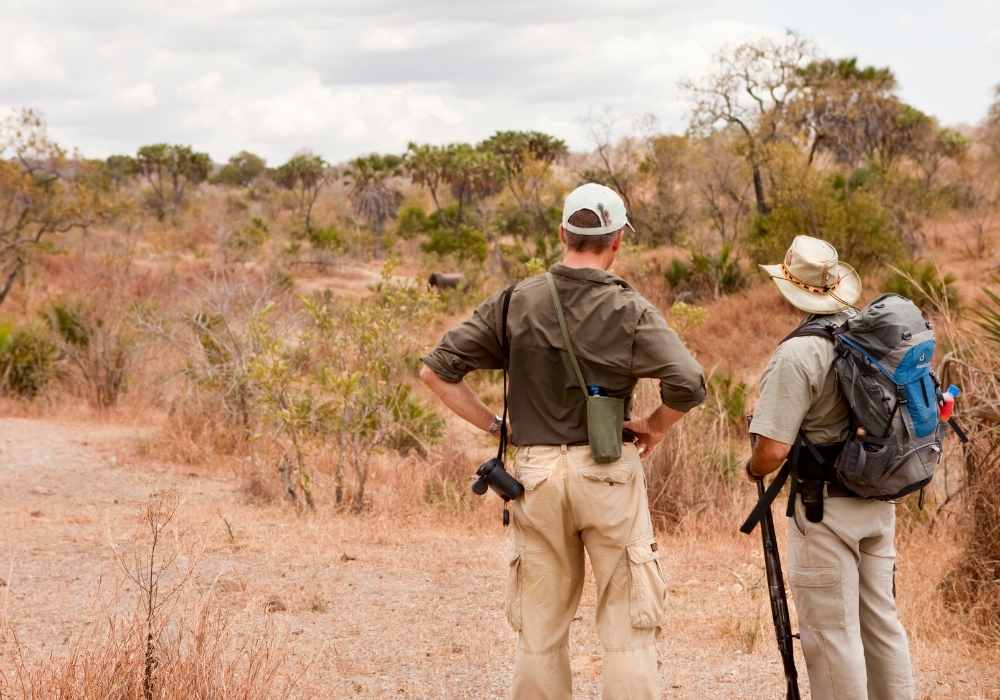
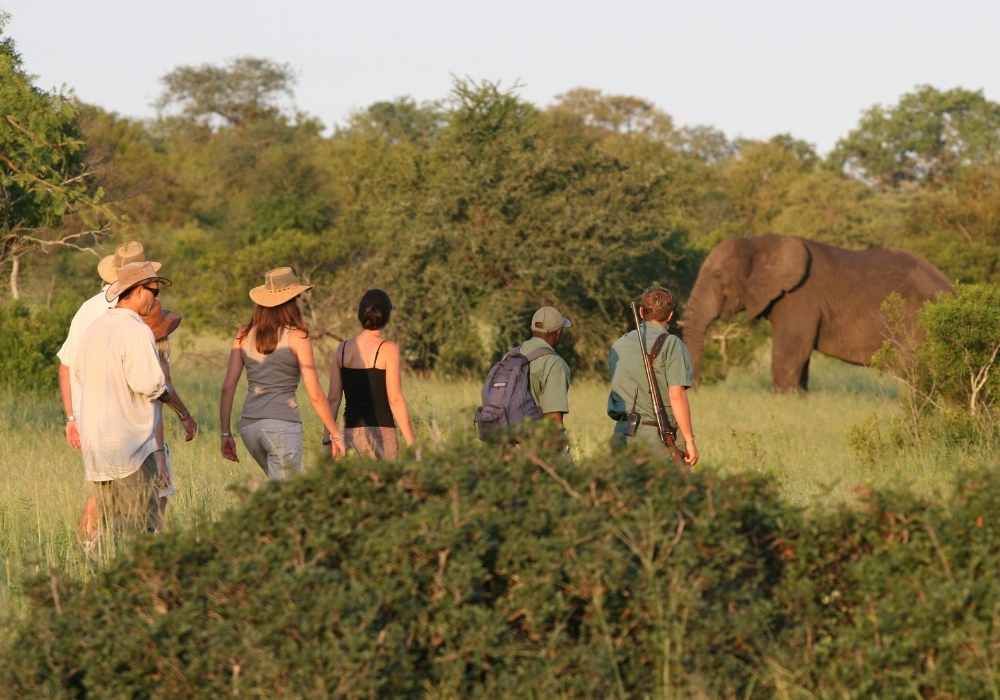
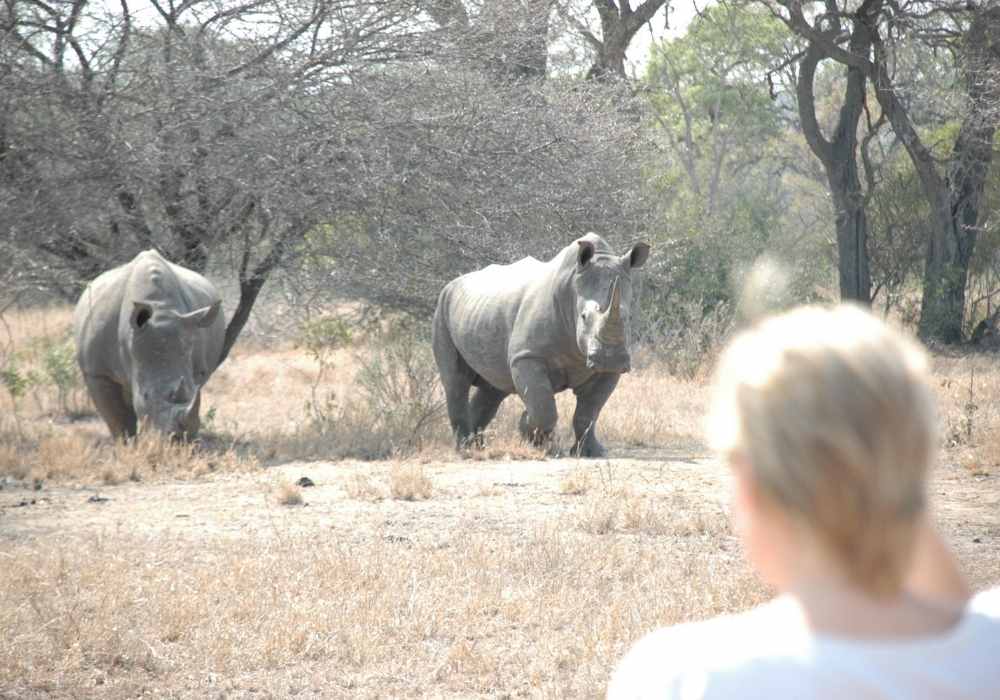
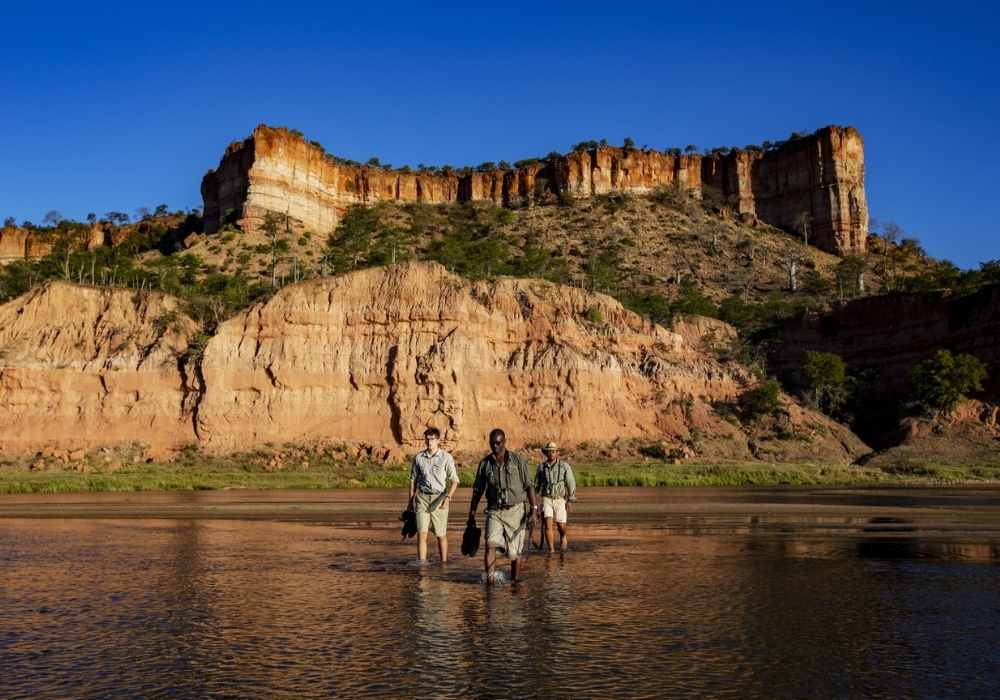
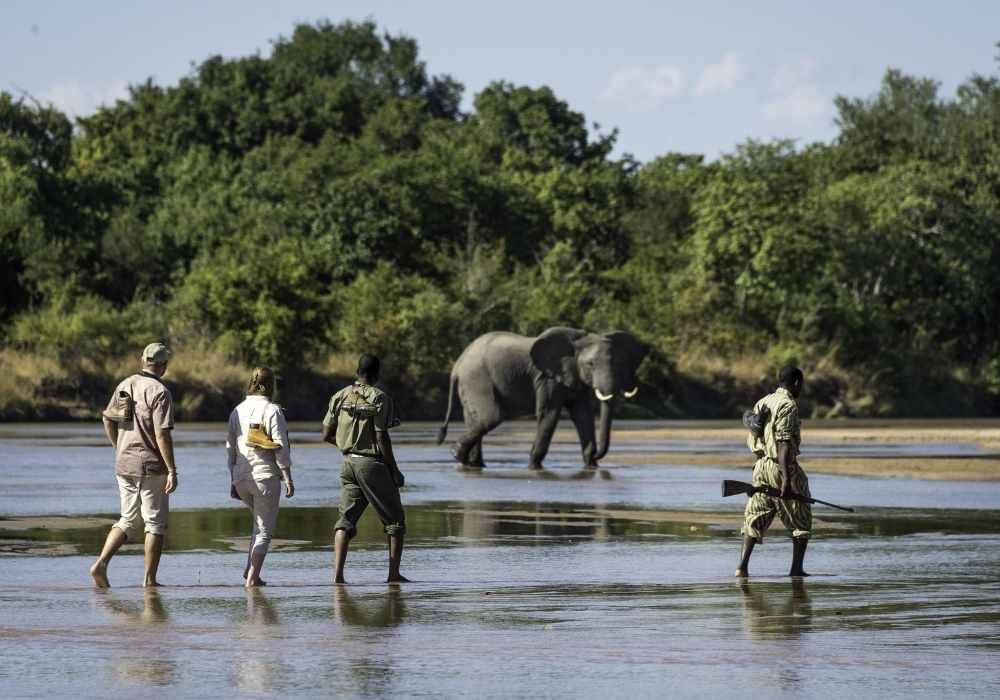
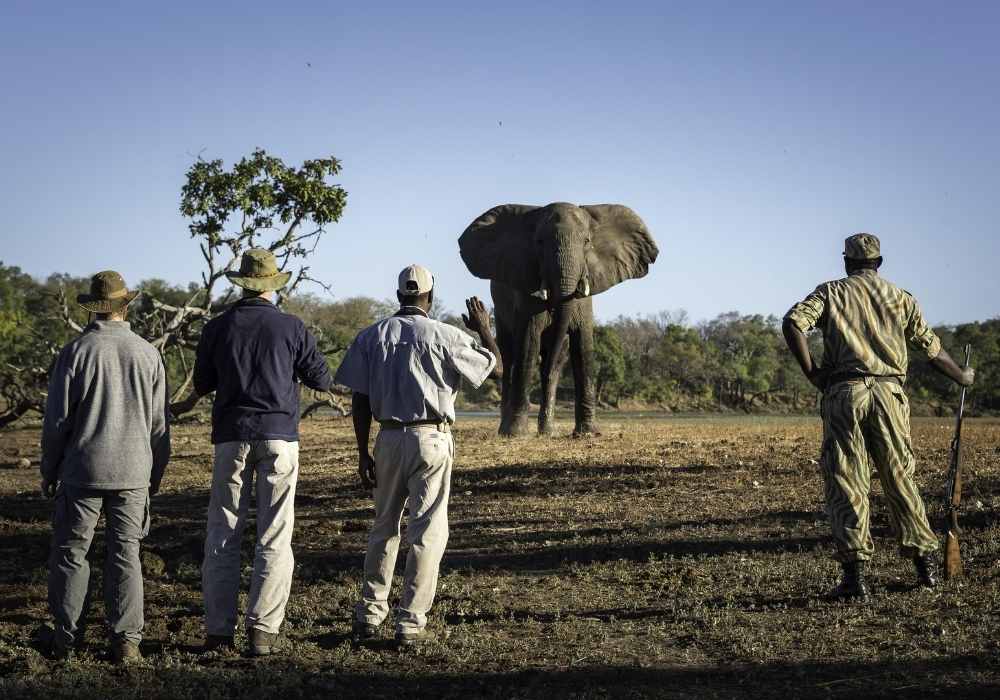
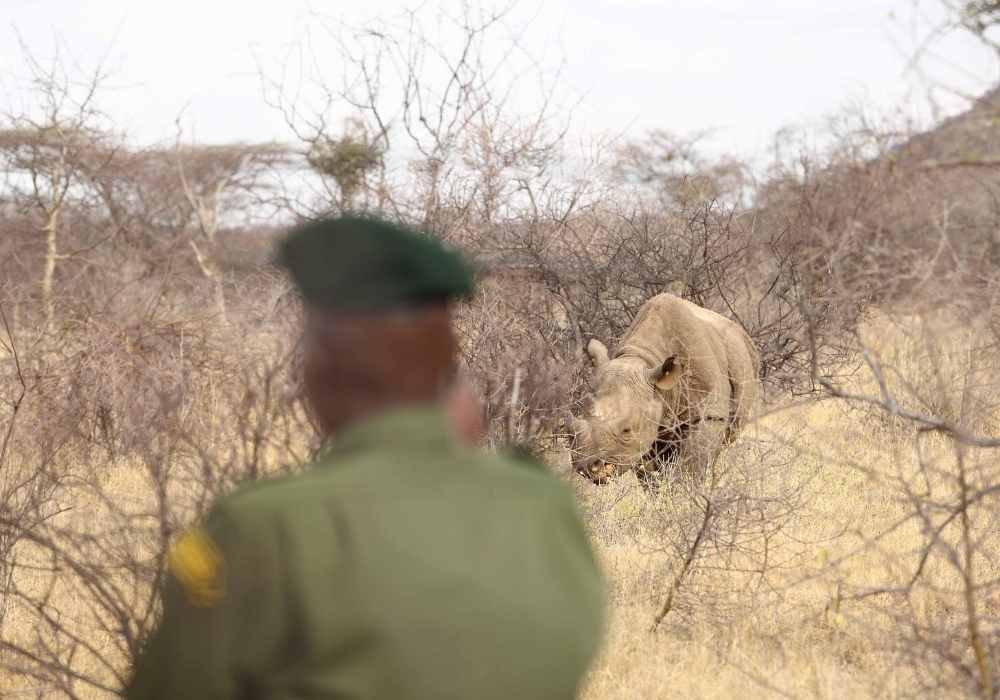
TIPS FOR WALKING SAFARIS
– Always listen to your professional and highly trained guides, in the briefing before the walk and throughout the day.
– Early morning starts are required, to avoid the heat of the day, plus a better chance of a predator is dozing off their nocturnal meal.
– Wear muted colours, ensure your clothing is comfortable and made of thin breathable fabrics, wear sturdy walking shoes – either hiking boots or trainers.
– Pack a lightweight backpack to put water, camera and warm tops in.
– Always walk in single file.
– Please whisper if you want to talk!
– Always listen to your guides.
– It is often very hot in Africa, even in the winter months during the day. You must adequately hydrate and always ask to stop if you are struggling with the heat.
– Remember your sun protection -sun hats, sunglasses and a high SPF cream must be used on a walking safari.
– On longer trails, pack snacks and hydration sachets to boost your mood.
– And lastly, listen to your guide!
